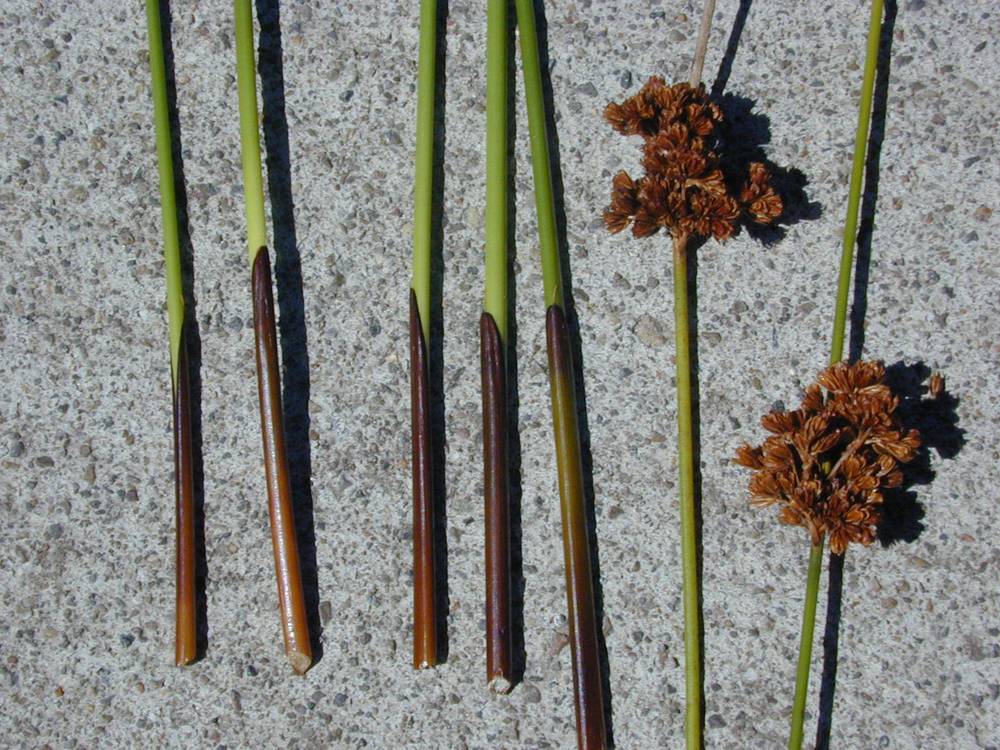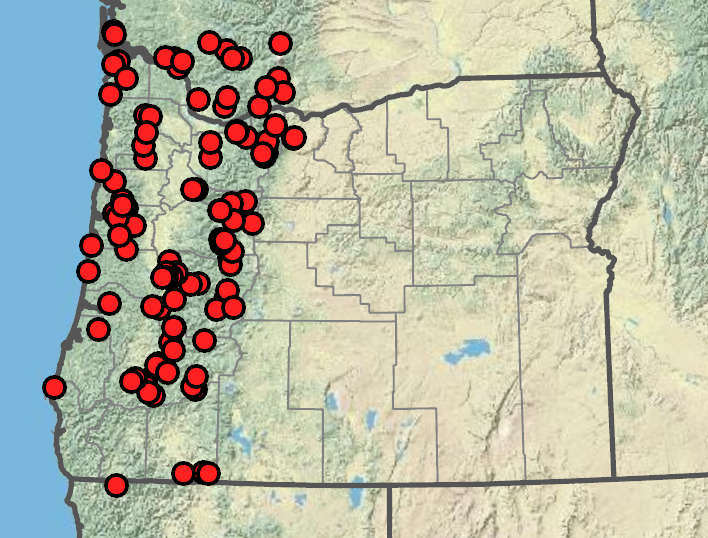Juncus laccatus
shiny rush
lacking blades;
proximal sheaths smooth, not papillose (at 10×);
distal sheaths 5–18 cm;
distal half dark brown or black; shiny; thick and glossy; nerves obscure;
apices symmetrical, unwinged, uniformly thick; dark, not inrolled.
loose clusters;
branches usually visible;
inflorescence bracts not swollen.
tepals 6; medium to dark brown-striped;
stamens 3;
filaments 0.4–0.9 mm;
anthers 0.4–0.9 mm;
styles 0.05–0.3 mm.
1.7–2.2 mm; shorter than the tepals, brown to dark brown;
apex obtuse to acute, 1-chambered.
0.4–0.6 × 0.2–0.25 mm, reticulate, apiculate.
=40, 80.
Juncus laccatus
Shores, swales, springs, seasonally wet ground, peatlands, and ditches. 0–1600m. Casc, CR, Est, WV. CA, WA; north to British Columbia, southeast to Arizona. Native.
Occasionally cultivated, the thick shiny dark and smooth sheath of this species is distinctive; J. exiguus has a thinner, paler, and more textured sheath; J. hesperius has a less shiny, paler, and papillose sheath.
Peter Zika
- Local floras:
BC,
CA,
OR,
WA
- Local Web sites:
CalFlora,
CalPhotos,
Flora NW,
PNW Herbaria
WildflowerSearch
iNaturalist (observations)
- LBJ Wildflower Center
- SEINet
- Plants of the World Online
- Encyclopedia of Life
- Wikipedia
- Google Image Search

